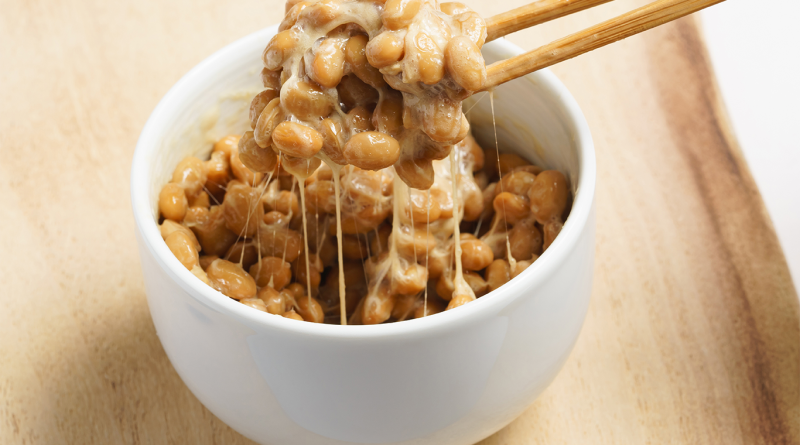Natto Uncovered: Japan’s Weird Secret to Longevity and Health
Natto, a traditional Japanese superfood, has been a staple in Japan for centuries, revered for its distinctive flavor and nutritional prowess. This fermented soybean dish, characterized by its sticky texture and strong aroma, has caught the attention of health enthusiasts worldwide. It’s not just food; it’s a testament to the enduring wisdom of Japanese culinary traditions and their understanding of health and longevity.
Unraveling Natto – What Makes it a Superfood?
Natto is produced through the fermentation of soybeans with Bacillus subtilis, resulting in a food rich in probiotics, vitamin K2, and nattokinase. These components contribute to its status as a superfood. Probiotics in natto enhance gut health, vitamin K2 is vital for bone and cardiovascular health, and nattokinase supports blood flow and reduces the risk of blood clots.
Natto and Your Health – An Expert’s Insight
Nutrition and health experts have long praised the virtues of traditional diets for their balance and focus on whole foods. Natto, a cornerstone of Japanese cuisine, embodies this philosophy, offering a treasure trove of benefits backed by modern science. According to nutritionists like Susan Mills-Gray, natto’s impact on health is profound and multifaceted.
Natto’s high vitamin K2 content is a game-changer for both bone and cardiovascular health. Vitamin K2 plays a pivotal role in directing calcium to the bones, where it’s needed, rather than allowing it to deposit in arteries, which can lead to heart disease. This mechanism is crucial for maintaining arterial flexibility and bone density, making natto a powerful ally against osteoporosis and heart attacks.
The fermentation process that natto undergoes produces nattokinase, an enzyme that has been studied for its potential to dissolve blood clots. This property could be a key factor in the lower rates of heart disease observed in populations that consume natto regularly. Nattokinase’s ability to improve blood circulation also suggests benefits for brain health, possibly offering protection against cognitive decline.
Furthermore, the probiotics found in natto, primarily Bacillus subtilis, enrich gut flora, promoting a healthy digestive system. A balanced microbiome is essential for effective digestion, immune function, and even mood regulation. The introduction of beneficial bacteria from natto can help combat dysbiosis, a condition linked to a range of issues from obesity to mental health disorders.
Culinary Adventures with Natto – How to Incorporate it into Your Diet
Natto, while nutritious, can be an acquired taste for many due to its pungent smell and sticky texture. However, its versatility in the kitchen means it can be enjoyed in various ways, making it accessible even to those new to this superfood. Start by trying natto over warm rice—a traditional method that lets you experience its flavor in a simple, straightforward manner. For those looking to gently introduce natto into their diets, incorporating it into familiar dishes can be effective. Consider mixing natto into omelets or alongside avocado on toast for a nutrient-packed breakfast. The adventurous might explore natto-based recipes like natto sushi rolls, spaghetti with natto and basil, or even natto pizza, showcasing its flexibility across cuisines.
When shopping for natto, opt for products in single-serving packs, which often come with a sauce and mustard that can enhance its flavor. Storage is crucial—natto should be kept refrigerated and consumed by the recommended date to ensure freshness and retain its health benefits.
Proceeding with Caution – Considerations and Side Effects
While natto is celebrated for its health benefits, it’s important to navigate its consumption with awareness. People taking blood-thinning medications should exercise caution due to natto’s nattokinase content, which can potentiate the effect of these drugs, increasing bleeding risk. Similarly, those with soy allergies must avoid natto, as it is a soy-based product. The presence of vitamin K2, while beneficial for bone and heart health, requires individuals on warfarin (a blood thinner) to maintain consistent intake to avoid interfering with medication effectiveness.
The fermentation process reduces antinutrients in soybeans, making natto a more digestible soy product. However, individuals with sensitive digestive systems may still experience gas or bloating. Introducing natto gradually into the diet can help mitigate these effects.
By understanding both the culinary versatility of natto and being mindful of its considerations, individuals can safely explore this superfood’s benefits. Whether integrating it into traditional dishes or experimenting with new recipes, natto offers a unique combination of flavors and health advantages.
